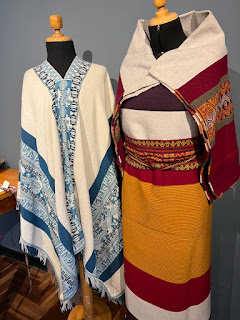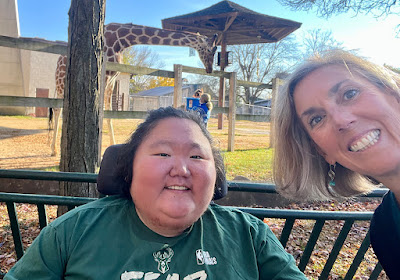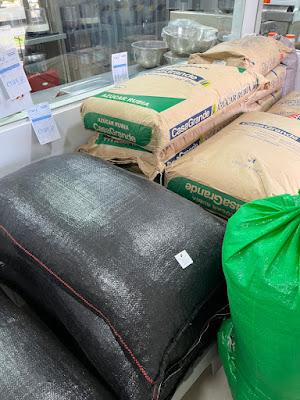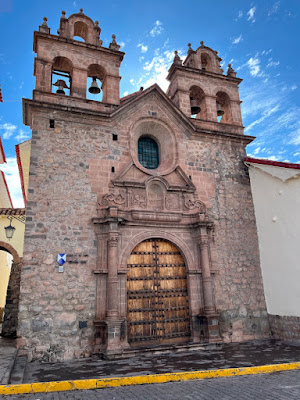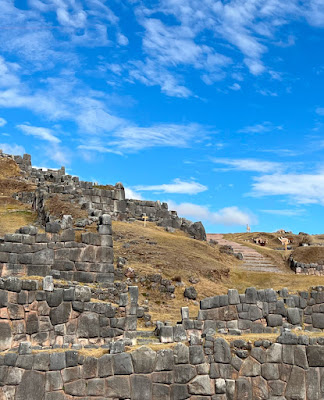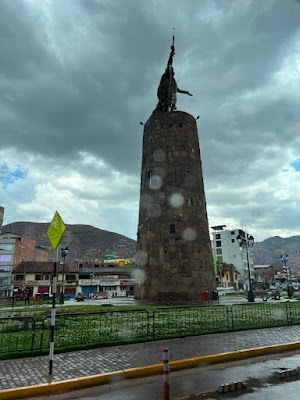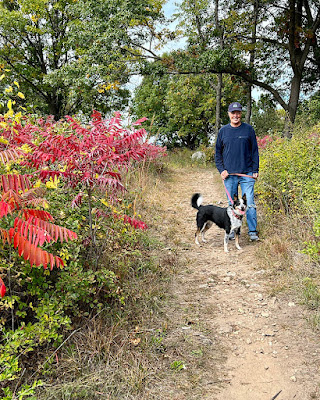One of the reasons for the Peru trip is that Julia has become very interested in the weaving hobby. She is on the programming committee for the Madison Weavers' Guild. After our Cusco guided tour, we walked over to the Textile Collective. In truth, I stayed outside on the sidewalk and people-watched on the busy downtown street, which is more interesting to me. But I took no photos, and Julia did, so here we go:
Here is the website link, if you want to read and see more.
That night, we met with Freddy, our Inca Trail Guide, and met our companions for the Inca Trail hike, which was to begin two days later.
P&G are a male couple from Scotland who had been enduring travel hell for the last few days. Their suitcases, and all of their gear, were still lost somewhere in Europe. Two different airlines were blaming the other.
What made things interesting was that P's bag had an Apple AirTag in it, so they knew that at least one of the bags was somewhere at the Madrid airport. The end result was that they had spent the last few days in Lima, buying all new trekking gear at the North Face store at very high prices.
During the orientation, Freddy explained that the porters would be carrying our tent, sleeping bag, sleeping pad, and 7.5 lbs of our personal gear. We would be carrying day packs only. The hotel desk had a scale, and I was well under the limit; Julia was exactly at the limit. The van would pick us up at 4:30 a.m. for the two hour drive to the trailhead.
Freddy then turned very serious and said, "I have to talk about something that nobody wants to talk about. I have a first aid kit and an oxygen bottle for emergencies, but sometimes it is necessary for people to stop hiking and be evacuated for any number of medical reasons. This will be very expensive, especially if it's a helicopter evacuation. You will be transported to the nearest town and then it will be up to you to pay for any medical care and to get back to Cusco. Again, this will be very expensive. Carry extra cash and credit cards for this purpose."
We kind of all looked at each other, hoping that this would never come to fruition. During the actual hike, events ensued that reminded us of this part of the part of the orientation.

